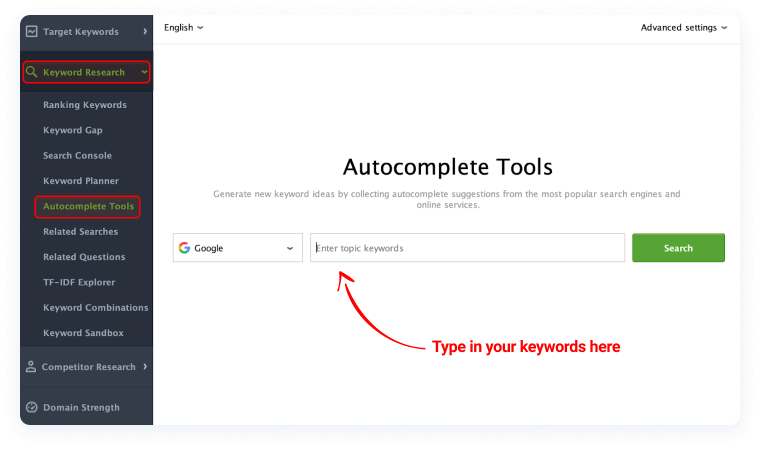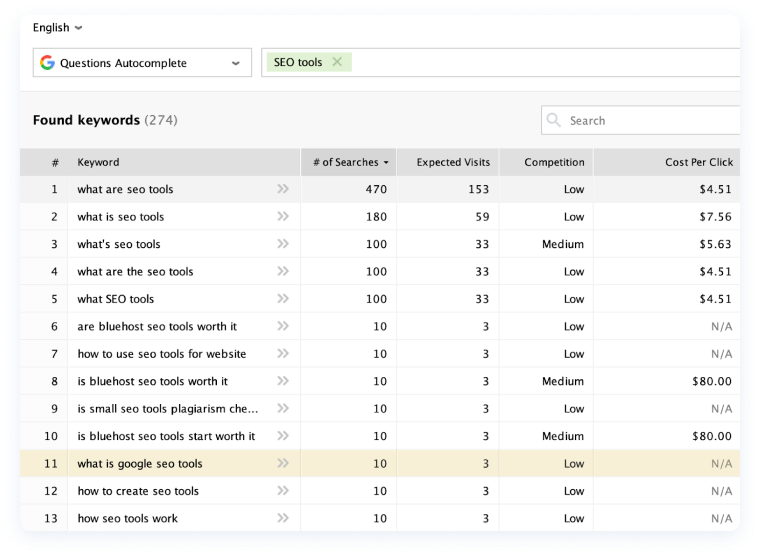Discovering new keywords
Today, you'll learn how to find thousands of new keyword ideas with the help of Rank Tracker.
As there are millions of keywords out there, one of the best practices you can leverage is to use multiple research methods. Thus, you can stay confident that you haven't missed any profitable keywords in your niche.
All in all, Rank Tracker has more than 20 keyword research tools in one app. However, taking into account that your SEO plan is limited to 30 minutes a day, let's walk through the first three.
1. Competition TF-IDF Explorer search method
This method allows you to collect your top competitors' keywords using TF-IDF analysis.
If you haven't heard the term TF-IDF before, here's a short explanation:
With this search method, Rank Tracker analyses your top 10 competitors and collects keywords that at least two of them have in common. This is done to spot and get the most frequently used keywords in your niche.
To perform a TF-IDF keyword check do the following:
- Jump to TF-IDF Explorer under the Keyword Research module.

- Type in your keywords, hit the Search button, and wait till the tool collects keywords.

Now that you have the list of keywords in front of you, you can either filter them now based on the TF-IDF score, or get back to them later in the Keyword Sandbox module.
2. Google Autocomplete method
Your next method of finding profitable keywords is Google Autocomplete.
Google Autocomplete is Google's feature that helps searchers complete their queries faster while they type. For instance, if you start typing "what movies…" into Google's search bar you'll instantly get the following suggestions:

This keyword research method is unique since it unveils your potential customers' interests, and how they tend to put search queries.
To perform the check:
- Go to the Autocomplete Tools submodule, which is under the Keyword Research module. Then, you can either type in keywords from your initial list or those that you dragged from Google Search Console.

- Hit the Search button and in a couple of moments, you'll be supplied with the list of the most popular Google suggestions.
Autocomplete Tools method is also available for Bing, Yahoo, YouTube, Amazon, and other search engines, so if you want to enrich your keyword list, make sure to check them too.
3. Related questions method
Related Questions is another method of getting an inside look into your customers' minds. It allows you to find the most frequently asked questions associated with your product or service.
To explore some new keyword opportunities, as well as content ideas, you'll have to do this:
- Stay in the Keyword Research module but move a bit down to Related Questions.
- Just as before, type in your keywords and hit the Search button. The tool will collect the information, and in a brief moment, the list of the most popular questions will be right in front of you.

Also, if you have more spare time today and want to learn some advanced keyword research techniques, make sure to read this A to Z guide on keyword research.
That's all for today. Now you know how to explore thousands of new keyword ideas. If you have any questions, make sure to drop them in the comments section below.